Swaths of snow cover across Iowa, northern Illinois and southern Wisconsin
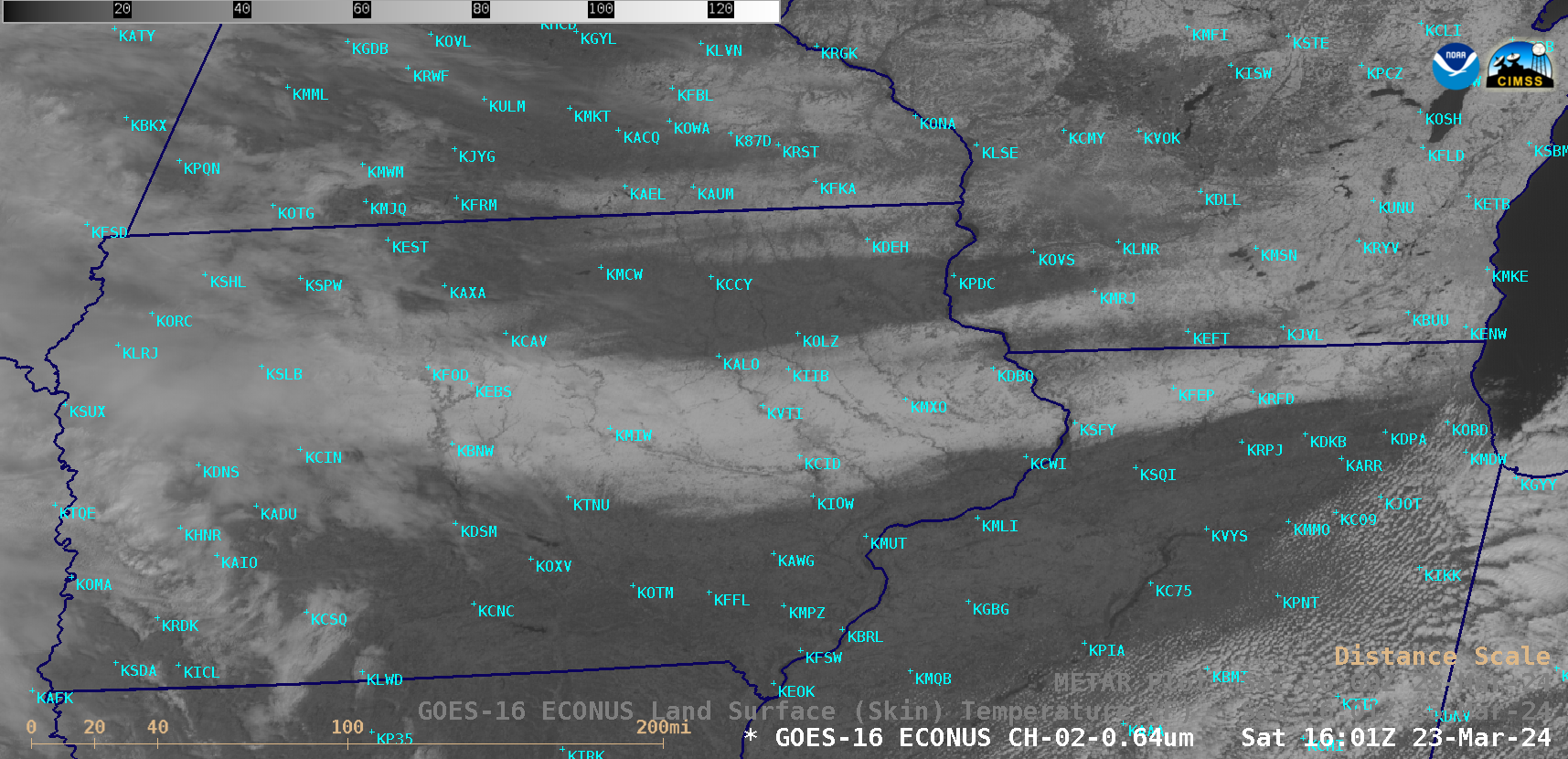
GOES-16 “Red” Visible (0.64 µm) images, with/without hourly plots of surface observations, from 1301-2001 UTC on 23 March [click to play animated GIF | MP4]
GOES-16 (GOES-East) “Red” Visible (0.64 µm) images (above) showed 2 swaths of fresh snow cover across central/eastern Iowa, far northern Illinois and far southern Wisconsin on 23 March 2024 — which were produced by consecutive systems on 21 March and 22 March (below). Total snowfall accumulations contributing to the 22 March southern snow swath included 8.0″ in eastern Iowa and 9.3″ in northern Illinois (NWS Quad Cities | NWS Chicago).
As daytime air temperatures warmed as a result of abundant incoming solar radiation, the zone of lesser snow depth (along the Wisconsin/Illinois border) between the 2 primary swaths of deeper snow cover revealed their northern and southern boundaries. The sharp southern boundary of the Illinois snow cover was particularly notable.
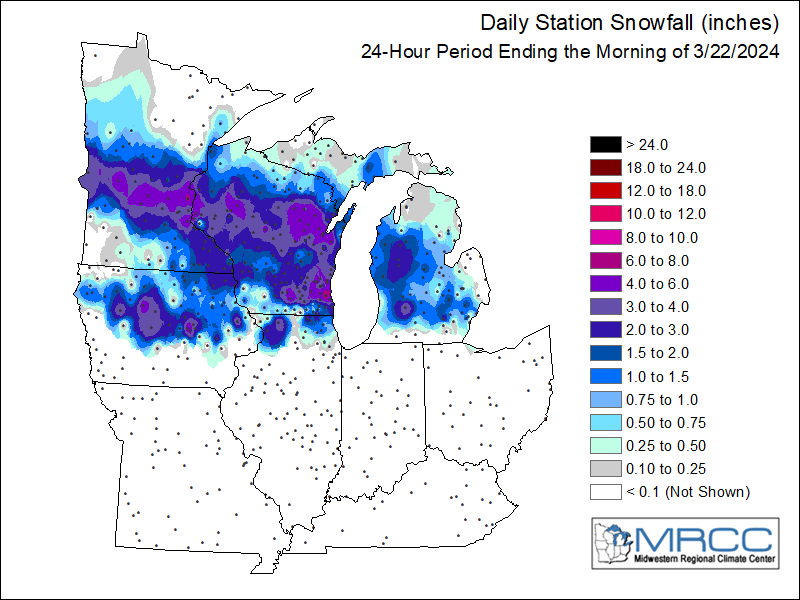
Maps of 24-hour snowfall ending at 1200 UTC on 22 March and 23 March (source)
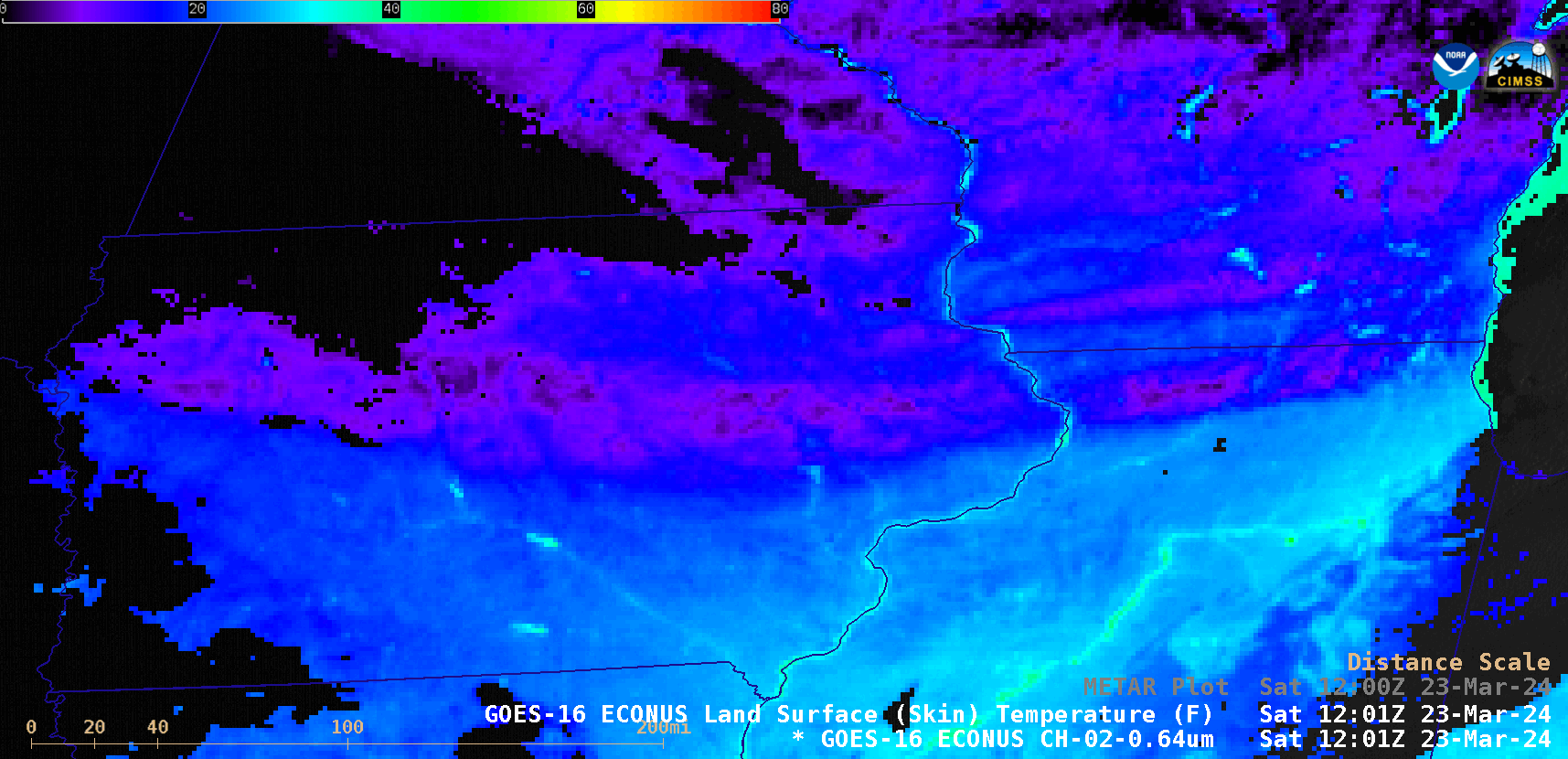
GOES-16 Land Surface Temperature derived product at 1201 UTC, with/without plots of METAR sites [click to enlarge]
The GOES-16 Land Surface Temperature (LST) derived product at 1201 UTC (above) revealed several pockets of LST values as cold as +5ºF (darker shades of purple) within the swath of snow cover across Iowa and northern Illinois. The coldest minimum shelter air temperature reported that morning was +9ºF at Webster City, Iowa (KEBS), which was located within one of the darker purple pockets of coldest LST.
A toggle between the GOES-16 Land Surface Temperature derived product at 1201 UTC and a Visible image at 1331 UTC (below) demonstrated how the LST product could be useful for identifying areas where snow depth was likely the greatest (especially in areas having sparse observations) — with deeper snow cover exhibiting a colder LST value.
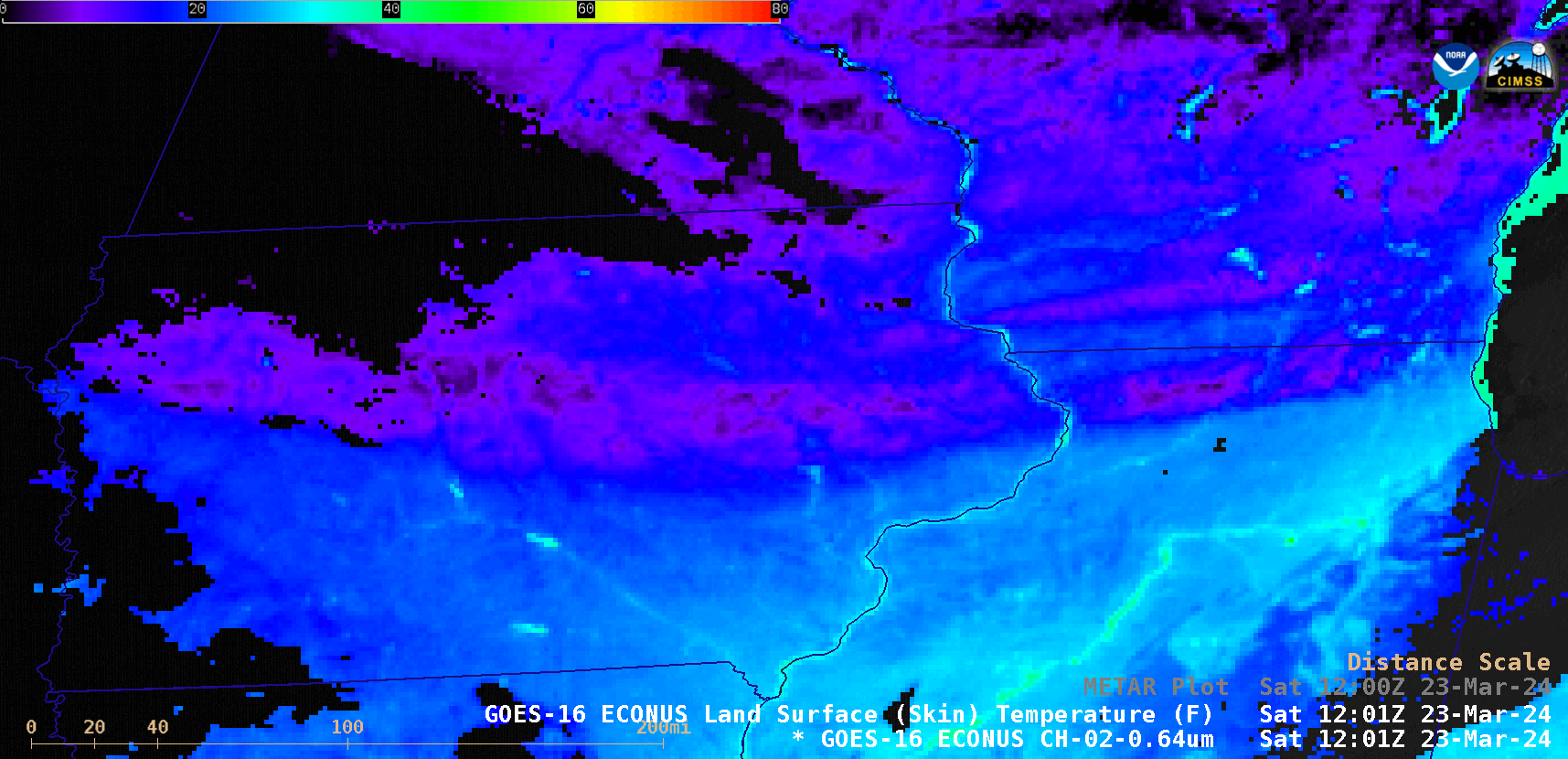
GOES-16 Land Surface Temperature derived product at 1201 UTC and “Red” Visible image at 1331 UTC [click to enlarge]
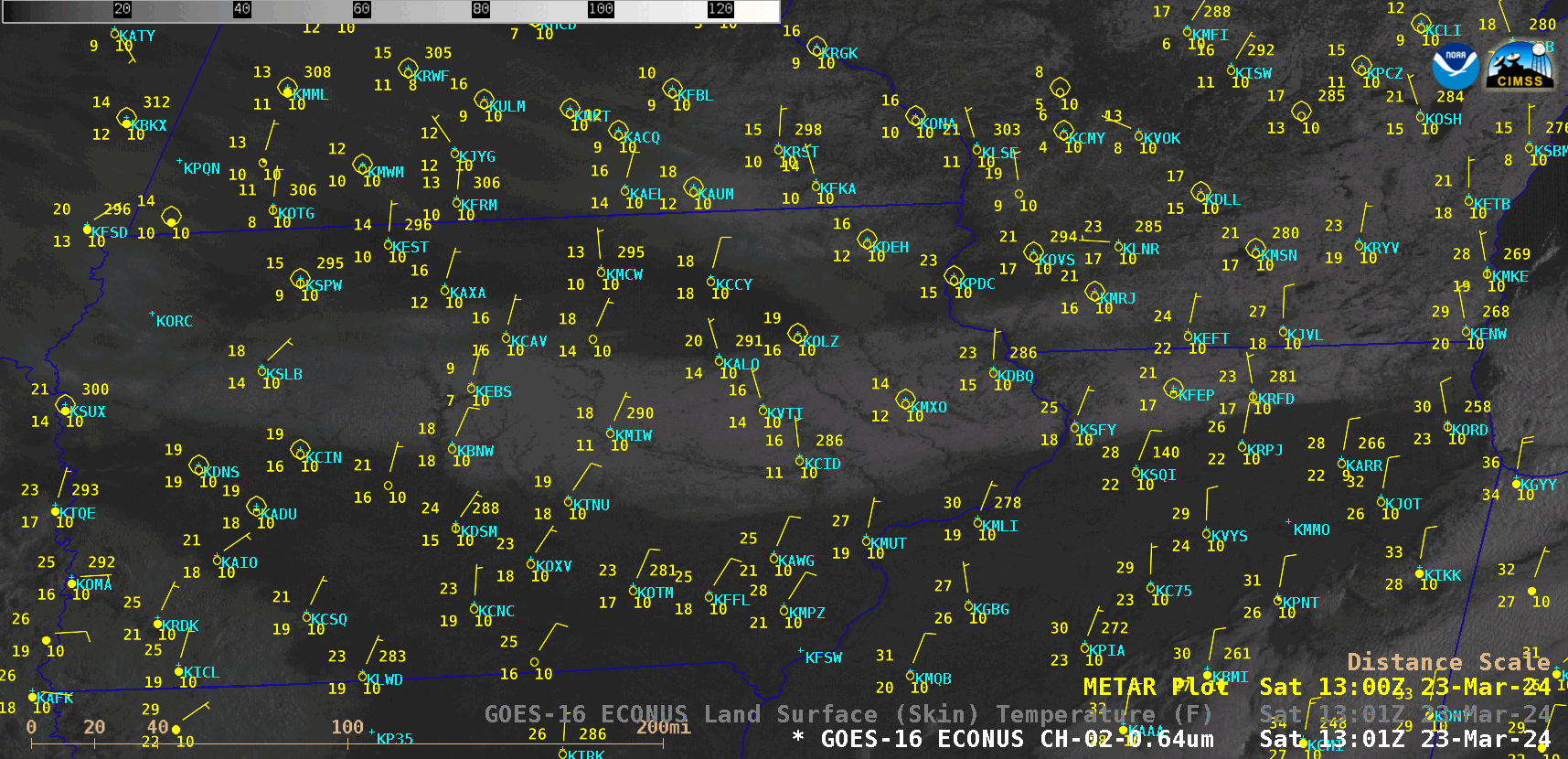
GOES-16 Visible image and Land Surface Temperature derived product at 1301 UTC [click to enlarge]
A comparison of GOES-16 Visible and Land Surface Temperature at 1301 UTC (above) showed that shortly after sunrise the METAR air temperatures were generally several degrees F colder over the deeper snow cover (and colder LSTs), as would be expected — but air temperatures were several degrees warmer than LST values. 5 hours later at 1801 UTC (below) the air temperatures lagged the rate of warming seen in LST (often by about 20-25ºF), especially to the south of snow cover over bare ground in Illinois.
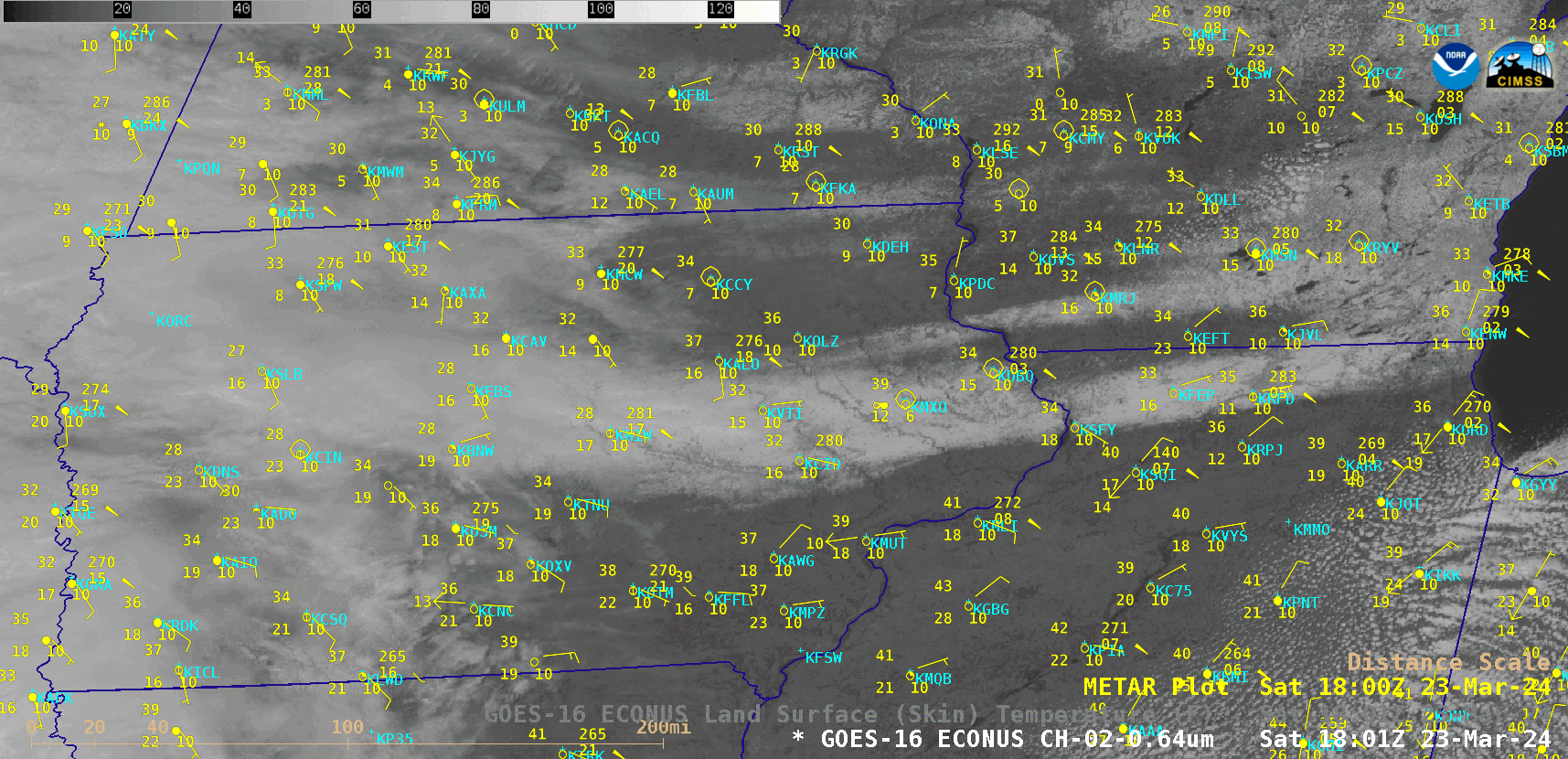
GOES-16 Visible image and Land Surface Temperature derived product at 1801 UTC [click to enlarge]
_______________________________________
It bears mentioning that some lightning activity was seen during the 22 March snowfall event, with two sites — Cedar Rapids, Iowa (KCID) and Savanna, Illinois (KSFY) — briefly reporting thundersnow. Toggles between GOES-16 Water Vapor (6.9 µm) images + GLM Flash Extent Density on 22 March and Visible images on 23 March (below) indicated that the lightning occurred near the southern edge of the resulting swath of heavy snow across Iowa and Illinois.

GOES-16 Mid-level Water Vapor (6.9 µm) image with an overlay of GLM Flash Extent Density at 1151 UTC on 22 March, along with a “Red” Visible (0.64 µm) image at 1316 UTC on 23 March [click to enlarge]

GOES-16 Mid-level Water Vapor (6.9 µm) image with an overlay of GLM Flash Extent Density at 1316 UTC on 22 March, along with a “Red” Visible (0.64 µm) image at 1316 UTC on 23 March [click to enlarge]
—————
Free Secure Email – Transcom Sigma
Transcom Hosting
Transcom Premium Domains
